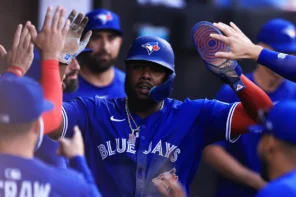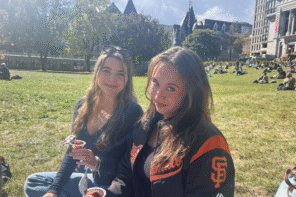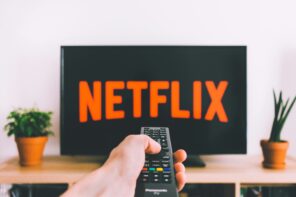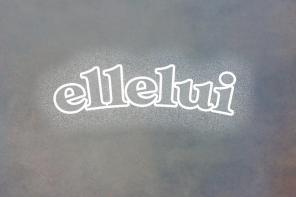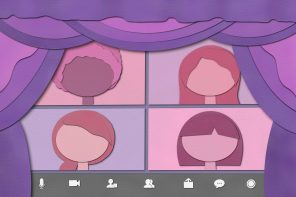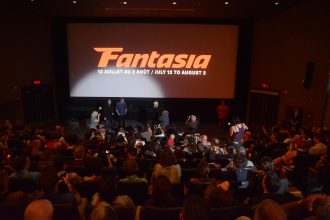Continuing with our Aughts & Culture series, we asked our editorial board to think back to better times — coming home from elementary school, grabbing a snack and watching their favourite childhood television show. Keep reading for a (comforting) blast from the past…
The Fairly Odd Parents by Sam Shepherd
Long before Walter White moonlighted as a methamphetamine dealer and Frank Underwood conspired his way to the presidency, Timmy Turner modeled for a generation of young TV fanatics what it means to be an anti-hero. With oblivious parents and a borderline abusive babysitter, Timmy was self-absorbed, inattentive, and lazy. Incidentally, Timmy Turner also mirrored how many of us in Generation Z were raised.
We were a generation with a wealth of new technologies at our disposal and surprisingly little parental oversight. We had access to Wikipedia before we learnt long division, we received our sex-ed through raunchy YouTube parodies long before any formal classroom curricula. In the show, whenever an adult interrogated Timmy about where he acquired new information, he would sputter: “Uh…the internet.” This go-to excuse resonated with a generation of children who grew up with an information superbank at their fingertips.
Timmy’s Fairy godparents – a squabbling married couple disguised as goldfish in his room – offered more than just wacky hijinks and humour. They offered him a brief escape from his isolation. Episodes tracked Timmy making wishes to act out his innermost desires, be it a perfect singing voice so he could secure the lead in his school musical, or wishing every adult to disappear so he could eat candy every day for lunch. Most episodes, however, ended with Timmy rescinding his wish to his fairy surrogate parents. He’d return to his humdrum life with an acquired lesson about altruism.
And so it was for us in Generation Z. Raised by both physical toys as well as digital devices, we learnt how to navigate life and childhood with a boundless realm of information that was always a Safari search away. And when this digital cornucopia revealed too much, when we accessed information that was confusing or frightening for our age, we eventually learnt for ourselves how to withdraw from our devices and return to the world of childhood play.
And perhaps this ability — to allow a vehicle of escapism to entertain, but not consume us — is something we can all learn from this buck-toothed 10-year-old.
Zoey 101 by Jenna Benchetrit
When I was in elementary school, navigating the highs and lows of youthful nonsense, I often dreamt of being in high school and the freedoms it would afford me: going to Cavendish Mall without parental supervision, a sleek Blackberry Curve to text my friends, wearing a skirt to school instead of a drab navy tunic. During the arduous waiting period, these fancies played out on my television every day when I got home and sat down to watch Zoey 101.
Zoey was the ultimate vision of high school. When you watched it you knew it was somehow a pipe dream, set in a utopia only accessible to older and cooler kids, a slice of that glossy Malibu-cool that saturated pop culture during the mid-aughts. “I’m just another kind of girl / And you wanna see my world,” taunted lead actress Jamie Lynn Spears in the show’s earworm theme song. When she announced, at 16 years old, that she was pregnant, the world seemed to tilt on its axis – Zoey Brooks, a teen mom? How could it be?
It was all a little too real-world for the blissful halls of Pacific Coast Academy, a school that offered its own brand of fresh-pressed juice, for god’s sake. Every student owned Vespa-like scooters and “Pear” products; whenever Zoey broke Chase Matthews’ dumb little heart, the scene was backdropped by the rise and fall of crisp blue California waves. Every episode presented a new problem for its characters and a new daydream for me. Of course, by the time I reached high school, the spell was broken – the only parts of the show that came true were the tacky necklaces, the hot meanies, and the stilted pubescent dialogue. And the part where they’re all forced into quarantine.
The only parts of the show that came true were the tacky necklaces, the hot meanies, and the stilted pubescent dialogue. And the part where they’re all forced into quarantine.
Phineas and Ferb by Sarah Farb
There’s 1(0)4 days of self-isolation and school comes around just to end it, so the singular problem of our generation is finding a good way to spend it.
Phineas and Ferb was a children’s show with an old soul. Structurally, it’s a program built for kids, adorned with a hyperactive title sequence, imaginative plot lines, and a vibrant form of illustration. But in its writing, Phineas and Ferb also sneakily made our generation’s sense of humour more sophisticated. Woven throughout its zaniest stories, it exposed us to so many of the constructs that more closely characterized the comedy of mature shows – irony, sarcasm, and a grounded self-awareness that instructed us to recognize those stories as absurd and to savour them. Indeed, P&F was so good at having its humour skew older that there are a whole host of jokes that probably went over our heads back in the 2000s, offering yet another reason to re-watch this show. If the jokes weren’t enough, Phineas and Ferb also delivered some of the decade’s most iconic tunes. Creators Jeff “Swampy” Marsh and Dan Povenmire are famous for their flash song-writing sessions, during which, in the span of twenty minutes, the two produced classics like “Squirrels in My Pants” (performed when a maniacal five year-old at the park sends squirrels into Candace’s pants) and “S’Winter” (about a hybrid of summer and winder created from a machine). Indeed, both on- and off-screen, in its stories and those who conceived them, Phineas and Ferb showed us what ingenuity could deliver to an otherwise boring day. And as we amble through self-isolation, what could be more important than that?
Bonus: check out this partially animated talk show in which Phineas and Ferb, as cartoon characters, interview real-life celebrities including Taylor Swift and David Beckham.
ARVE error: Mode: lazyload not available (ARVE Pro not active?), switching to normal mode
The Berenstain Bears by Megan Abellera
The Berenstain Bears defined my childhood. My siblings and I would gather around our TV to watch the short episodes after school. It was always a bonus when an episode would end, and you realized that it was only part one of the two part thirty-minute time slot. For those who have not had the chance to grow up alongside this bear family, The Berenstain Bears is an animated TV show based on a picture book series, which follows the Bear family (Mama, Papa, Sister, and Brother) living in Bear County. Each episode broadcasts the family’s lives as they struggle through life problems, in the end learning from their mistakes. You can always count on The Berenstain Bears to teach you some sort of safety, moral or life lesson. The series as a whole is literally a handbook full of them, from saying please and thank you, to precautions about strangers, bullying, sustainable practices and even instilling in young children that everyone has a voice. As Professor Actual Factual mentions in the Don’t Pollute episode, “… sometimes little ideas can help fix the biggest problems.” The professor is speaking straight facts; no wonder they named him Actual Factual. Looking back, there were many hidden gems in this series, some of which I am still uncovering as I read/watch it now. These cute, wholesome, and witty bear characters make it hard not to love this show!
Community by Noah Simon
When thinking of comforting, binge-worthy television shows, my mind almost always turns to Community, Dan Harmon’s endlessly re-watchable, ruthlessly self-aware sitcom about a group of community college students. The irony of Community, which premiered in 2009, is that it rips to shreds tired, formal and narrative conventions while simultaneously doing them better than most other shows. It offers so much more than just meta-commentary: it’s a supremely smart, genuinely heartwarming and hilarious comedy with an immensely likeable set of characters (and Donald Glover!). My younger self certainly missed 80% of its in-jokes and pop culture references, but it didn’t matter. With so much more to latch onto, most audiences still didn’t give it a chance when it aired.
Community’s low ratings and tumultuous production history reflected the general confusion about what to make of the show. And looking back, it’s kind of amazing that it lasted for as long as it did. But the cult of Community remains fervent and strong, its fanbase as committed to spreading the show’s gospel as it is to watching the show itself. For die-hard fans, Community will always retain a special place in their hearts. I recently re-watched the Justin Lin-directed “Modern Warfare,” also known as “the paintball episode,” and it still holds up a decade later as a brilliant pastiche of horror and action movies. The show has so many good episodes like this — specifically in the first three seasons — that it’s nearly impossible to resist clicking on the next one, making it the perfect thing to get familiar with while stuck inside. Cool, cool cool cool.
Malcolm in the Middle by Youcef Sahnoune
Malcolm in the Middle is the definition of a show that can be watched endlessly. Whether it was Justin Berfield’s frosted tips, or pre-Breaking Bad Bryan Cranston’s jubilant personality, Malcolm in the Middle’s all-star cast and its timeless sense of humour are reason enough to give the show a chance.
Growing up without cable TV, while others were watching Hannah Montana and Suite Life or Boat Life or whatever the Sprouse twins were in, Malcolm in the Middle was just one of those shows I could always take comfort in. The show follows Malcolm (played by Frankie Muniz), the middle child of one of TV’s most dysfunctional families, and his turbulent journey through his teenage years. While that journey may include some ridiculous things – like climbing a billboard, joining the army, and building a roof catapult – Malcolm’s feelings and emotions as a teen are something we can all relate to. On top of that, Bryan Cranston and Erik Per Sullivan and their supreme acting play a huge part in what makes the show so lovable. The almost child-like cheerfulness that Cranston portrays as Malcolm’s father, as well as the ironic maturity Sullivan brings as Malcolm’s little brother, both contribute to the fact that this show, while originally made for children, can be enjoyed by anyone. And for me, whether it’s the general stress that comes with being a university student, or the unrelenting thought that the world might be ending, a quick episode of Malcolm in the Middle never fails to ground me and take me back to the days where everything was just so simple.
P.S. The theme song to this show will undoubtedly, and indefinitely, be on repeat in your head. It’s not a choice, just go with it, it’ll be worth it.
ARVE error: Mode: lazyload not available (ARVE Pro not active?), switching to normal mode
Scooby Doo, Where Are You! by Rohan Roy
Although the timeless classic twice haunted my soul with live action versions (Ruh-Roh!), Scooby Doo has always served as the bedrock of my love for cartoons, animations, and solving a classic mystery. Some of my fondest childhood memories involve lying awake in bed, waiting for my Mom to call me into the living room and join “Scoob and the Gang” for another chilling night of crime-solving. Aside from any emotional attachment I may feel towards Scooby Doo, there’s no doubt that the series has served as a timeless classic for generations of TV watchers.
As one of those kids who was not allowed to watch Cartoon Network at a younger age (and very few are able to deny that they were never in that position), a short and sweet Scooby Doo episode was invaluable, whether behind my Mom’s back or by her side. To this day, something is comforting about the sight of the gang together, and if the right opportunity presents itself, then I will certainly close the deal on a Mystery Machine-styled minivan for my personal collection.
Whether it was waiting to unmask the villain of the week, or idolizing Fred and Daphne’s seemingly picture-perfect romance, Scooby Doo is always the perfect way to forget about the unfortunate realities that we are faced with as we grow older. For me, it’s a way to set back the clock, and relive sitting on the couch next to my mom as a child. On a fundamental level, it’s easy to step back and analyze the extent to which Scooby Doo’s writers have impacted TV today. I might just be the most irritating person to work with in a group project, but you can always count on me to announce the fact that we must first “split up and search for clues.”
Scooby Doo is always the perfect way to forget about the unfortunate realities that we are faced with as we grow older.
Total Drama Island by Rose Bostwick
As a zoomer who grew up in a household without cable TV, I often felt robbed of a proper childhood. I never understood my peers’ pop culture references, and if not for my grandma’s On Demand subscription, I might have even missed one of the most subtly impactful shows of our generation. A glorious (if slightly disgusting) fever dream set in Muskoka, Ontario, Total Drama Island was truly underrated.
Anyone familiar with this show probably thinks I’m being facetious, but hear me out. Sure, maybe Island’s satire of reality TV shows like Survivor wasn’t necessarily clear to its young audience. Speaking of target audiences, the alternating bathroom humor and overt sexual references made it unclear who the show was even meant for. Perhaps even the animation could have been slightly improved. Despite its flaws, Total Drama Island is the show I’m choosing to rewatch this quarantine.
Island’s object of satire – the shallow, fame-obsessed, find-success-at-all-costs teen – is particularly relevant for our generation, which is very used to these characterizations. Yet even though the characters are purposefully one-dimensional, it’s impossible to follow the show without hoping one of them eventually emerges victorious from Camp Wawanakwa with a relationship to boot. Personally, I was always rooting for Gwen, dubbed “the Goth.” Honestly, I hadn’t thought about this show until very recently, but I’ve seen it come back as a TikTok meme where people cosplay as their favorite character. I’ve been thinking of joining in; I think I kind of resemble Bridgette. I might be too old for that, but hey – I wanna be famous, too.
6teen by Liane Faingold
My sixth grade after-school ritual was very simple: it consisted of me preparing mac and cheese and watching 6teen on Teletoon. For those who are unfamiliar with my pick, 6teen is an animated sitcom that centers on the lives of six teenagers who all hang out together at the Galleria Mall. The show navigates the developmental milestones, trials and tribulations of adolescence; we see the characters getting hired (and fired) from their first jobs, getting into (and out of) their first relationships, and dealing with the responsibility of having their first credit card.
It is important to note that I was the type of kid who thought I had everything figured out and who anxiously waited for the rest of the world to take me seriously. Growing up in downtown Montreal, I used to beg my mother to let my friends and I hang out in the Eaton Centre food court precisely because we wanted to be just like my favourite characters, and would dream of the day when I could exert my independence and start working. 6teen gave me something I could look forward to — a world full of possibilities and where mistakes could occur. Even now at 21, I feel a sense of “coolness” when I meet up with my friends at the mall, and quietly laugh at myself knowing that it is all because of one show.
The collective unconscious of Generation Z is still reckoning with the havoc wreaked by this Nickelodeon death dream; if you open up your mind and see what’s inside, I’m sure you’ll find some lingering trauma of your very own.
Drake and Josh by Jacob Klemmer
It’s perhaps a cliche to return to a childhood show and discover that it’s much darker than you noticed. I expected a bit more ‘edge’ returning to Drake and Josh, but this show isn’t just dark, it’s a pure, relentless descent into madness; the Twin Peaks: The Return of Nickelodeon. Its world is an amoral Beckettian hellscape, governed alternately by perpetual cosmic unfairness and raw coincidence, populated with absurd fetish objects that seem to contain sinister souls – Oprah cutouts, lucky shirts, foam fingers, Peruvian Puff Peppers – and ruled over by Megan, a more terrifying agent of chaos than Heath Ledger’s Joker and Killer BOB combined. Many episodes feature Drake and Josh getting wrapped up in Safdian criminal odysseys where there is always the tangible threat of violence. Some other episodes feature no plot action beyond the brothers interminably waiting (to ride The Demonator, to be rescued from the Treehouse, for Megan’s Revenge, for Godot) and stewing in their operatic anxiety and existential anguish. The most existential episode, perhaps, is Josh Is Done, where one fateful day Josh simply refuses to be the perpetual subject of the universe’s suffering, and in an instant, the Drake/Josh Dialectic is reversed, Josh prospering academically and socially and Drake suffering countless indignities, including being blasted with hazardous chemicals. The collective unconscious of Generation Z is still reckoning with the havoc wreaked by this Nickelodeon death dream; if you open up your mind and see what’s inside, I’m sure you’ll find some lingering trauma of your very own.



